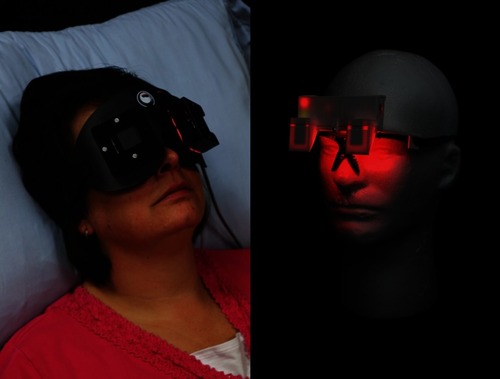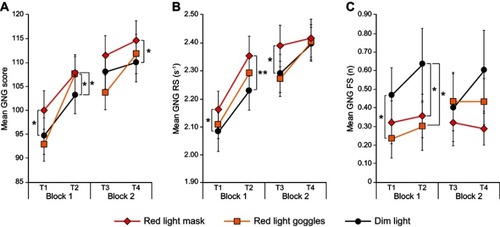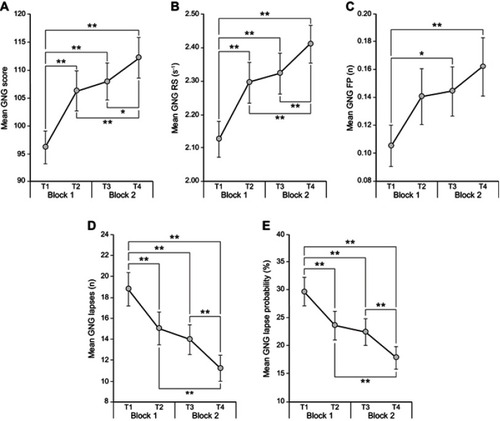Figures & data
Figure 1 The red light mask (left) used for the RM experimental condition while participants were asleep, and the red light goggles (right) used for the RG experimental condition immediately after waking.

Figure 2 Schematic diagram of the within-subjects, crossover design schedule for lighting conditions, auditory performance testing (GNG and TD tasks), sleep questionnaire administration (QT1–QT5), and circadian system biomarker measurements (cortisol and melatonin, BT1–BT3) for all experimental sessions. The 90-min sleep opportunity period included a 30-min window for the participants to fall asleep, and participants were expected to sleep for at least 1 hr. During the red light mask condition, participants’ eyes were closed during the sleep period and the light stimulus was received through their eyelids. The order of conditions for each of the study cohorts is shown on the right.
Abbreviations: BT, biomarker time; GNG, go/no-go task; QT, questionnaire time; TD, target detection task.

Figure 3 Results recorded for the GNG task under the study’s 3 lighting conditions: (A) mean scores, (B) mean RS values, and (C) mean FS values. The error bars represent SEM. Statistical significance: *P<0.05, **P<0.01. See data analyses.
Abbreviations: GNG, go/no-go task, RS, response speed; FS, number of false starts.

Table 1 Linear mixed effects model for the GNG task outcome measures
Figure 4 Results recorded for the GNG task under all lighting conditions at the first (T1 and T2) and last (T3 and T4) 2-min time periods during each performance testing block: (A) mean scores, (B) mean RS values, (C) mean FP values, (D) mean number of lapses, and (E) mean lapse probability. The error bars represent SEM. Statistical significance: *P<0.05, **P<0.01. See data analyses.
Abbreviations: GNG, go/no-go task; RS, response speed; FP, false-positive rate.

Figure 5 Mean TD results for all conditions at the first (T1 and T2) and last (T3 and T4) 2-min time periods during each TD performance testing block. The error bars represent SEM. Statistical significance: *P<0.05, **P<0.01. See data analyses.
Abbreviations: TD, target detection task.

Table 2 Linear mixed effects model for the TD task outcome measures
